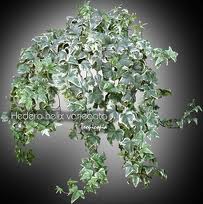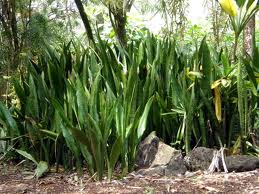 |
| Paul Ecke, Sr. |
It's easy to look back at a company's history to see the moment an innovation happens, whether it was a new idea, a good business venture, or, for the Ecke family, a new seedling.
The Paul Ecke Ranch is proud to claim many of these moments through four family generations..
Albert Ecke arrived in the Hollywood, California area in 1900, intending a brief stay on the way to Fiji. The Ecke family owned a health spa in Europe, and it was Albert's intent to open a similar business on the island. After a brief visit, and a return trip to Germany, Albert Ecke made his stay in California permanent in 1906 by settling in the Eagle Rock area.
Albert decided to venture into agriculture around 1911, establishing a fruit orchard and dairy farm. His real love was flowers, and he dabbled in growing several varieties.
Of particular interest to Albert Ecke, and even more so to his son Paul, was the tall, leggy red plant that grew wild throughout the area.
A native of Mexico, the plant had been introduced into the United States in the early 1800s by Joel Roberts Poinsett. The poinsettia's yearly cycle of blooming during the winter, near the holiday season, gave Paul the notion that this would make an ideal official holiday flower. But the question remained: how to promote and market a plant that most people had never heard of or even seen, let alone associate it with the holiday season?
 |
| A Wild Poinsettia |
Production of field grown blooming plants was begun in earnest, and were sold at roadside stands in the Hollywood and Beverly Hills area.
 |
| Harvesting field grown Poinsettias in the 1920s |
As the Hollywood area became increasingly developed, it became necessary for the Eckes to find other land on which to grow. Their search ended in the little town of Encinitas, approximately two hours south of Los Angeles.
There was little in the way of amenities in the area at that time, but it did offer several important lures to the poinsettia-growing family: a climate that was mild year-round, nearly identical to that in which the native Mexican plants grew wild. A good water supply, cooling ocean breezes, and the close proximity to rail transportation made the location as close to perfect as Paul could have hoped. In 1923, the Ranch moved to its present location.
From 1923 to the mid 1960s, the Ranch's main business was producing field-grown poinsettia mother plants. These plants were harvested in the spring, and shipped in railroad box cars to greenhouse growers across the country. When he was not directly involved in the day-to-day business of growing acres of poinsettias, Paul traveled the country, promoting the plant to greenhouse growers, teaching them what he had learned and encouraging them to market the plant as a holiday flower.
 |
| Poinsettia Field, Hollywood. July 23, 1948 |
The 1960s was a decade of industry innovation:
Early poinsettia varieties were not particularly adaptable to a greenhouse growing environment. They were leggy, easily lost their colored bracts, and tended to fade quickly outside of the controlled environment of the greenhouse.
All that changed in 1963. Developments in poinsettia breeding yielded the first commercial-quality cultivars that grew best as potted plants. At the same time, Paul's son, Paul Ecke Jr. joined his father in the business.
With formal training in horticulture from The Ohio State University, Paul Jr. recognized the advantages of the changing nature of the business. He encouraged his father to move toward greenhouse culture. Though skeptical of such a radical change, Paul Sr. agreed, and the family began building greenhouses. By the mid-1960s, most of the Ranch's commercial growing operations had shifted from the field to the greenhouse. Rather than shipping large dormant mother plants via rail car, the Ranch could now ship much smaller poinsettia cuttings via air freight. This new transportation method also helped the Ranch business take on a more international scope
 |
| Shipping Poinsettia "Mother Plants" to growers across the nation--By Rail! |
In 1991, representing the culmination of a plan he had set in motion in the early 1970s, Paul Jr. turned over the management of the company to his son, Paul Ecke III.
 |
| Paul Ecke III |
With a lifetime of exposure in the family business and an MBA from Duke University, Paul III positioned the company for the 21st century.
In addition to maintaining an active New Products Development department, Paul III saw the need to diversify the Ranch's product offering.
In 1997, the Ecke Ranch began growing poinsettia stock plants in Guatemala and today is recognized as the largest poinsettia stock production facility in the world. Paul Ecke De Guatemala employs over 700 people, including 40 college-degreed professionals. Paul Ecke De Guatemala has been recognized by the country of Guatemala as Exporter of the year twice in the last 12 years. In addition to this award they have also been recognized for many other national achievements, including receiving three awards in 2009. Ecke Europe is the European sister company to the Paul Ecke Ranch involved with the distribution and promotion of poinsettias throughout the world to support the North American operation of the Paul Ecke Ranch. For decades, Ecke Europe has been distributing poinsettia cuttings throughout Europe and Asia and their cuttings are acclaimed as the highest quality by their customers.
 |
| "Prestige" by Ecke Ranch |
Poinsettia breeding work continues today by Dr. Ruth Kobayashi. Ruth’s work has yielded some of the most significant poinsettia genetics known to date. In 2002, the Paul Ecke Ranch introduced Prestige™ Red known for its exceptional branching and extremely sturdy stems. Since Prestige’s introduction, its sales have quickly grown to become the number one selling red poinsettia. Breeding efforts at the Paul Ecke Ranch are also expanding to include other species within the Euphorbia genus.
 |
| Red "Winter Rose" Poinsettia |
While remaining committed to the traditions and philosophies established by his grandfather and refined by his father, Paul III brings a progressive business perspective to all Ranch operations. Advancements in breeding, expansion of operations in Europe and Central America, and the implementation of high-tech growing processes have allowed the Paul Ecke Ranch to become recognized as a leader in the industry world-wide yet remain true to their American roots planted by four generations.
 |
| "Jingle Bells" |
 |
| "Ice Punch" |
 |
"Apricot"
|
And, by the time, Paul Sr. had turned over most of the day to day operations of running the visiting grower customers. Paul Jr. recognized that greenhouse production alone would not sustain the company. His vision of what the poinsettia plant could be propelled his efforts, and he worked tirelessly to keep the plant before the public. Through media placements, television and print promotions, he made certain that poinsettias became a necessary part of the holiday experience. No holiday scene could be considered complete without at least one poinsettia in it. On a larger scale, the Ranch worked with television, such as The Tonight Show and the Bob Hope Christmas Specials, to make certain that poinsettias were always a part of the holiday sets.
This constant effort paid off: poinsettias today are as much a part of the holiday season as evergreens and carols. In a major way due to Albert Ecke who decided not to head onto Fiji but to stay and plant his business in the USA.


























































